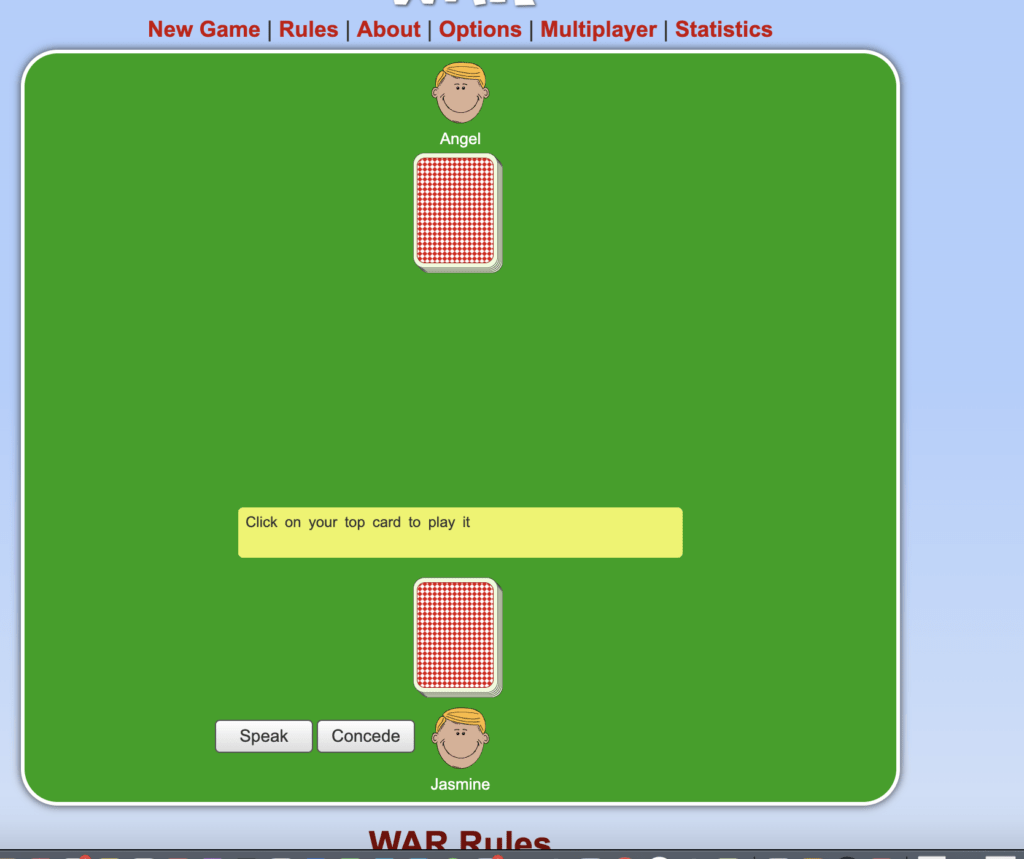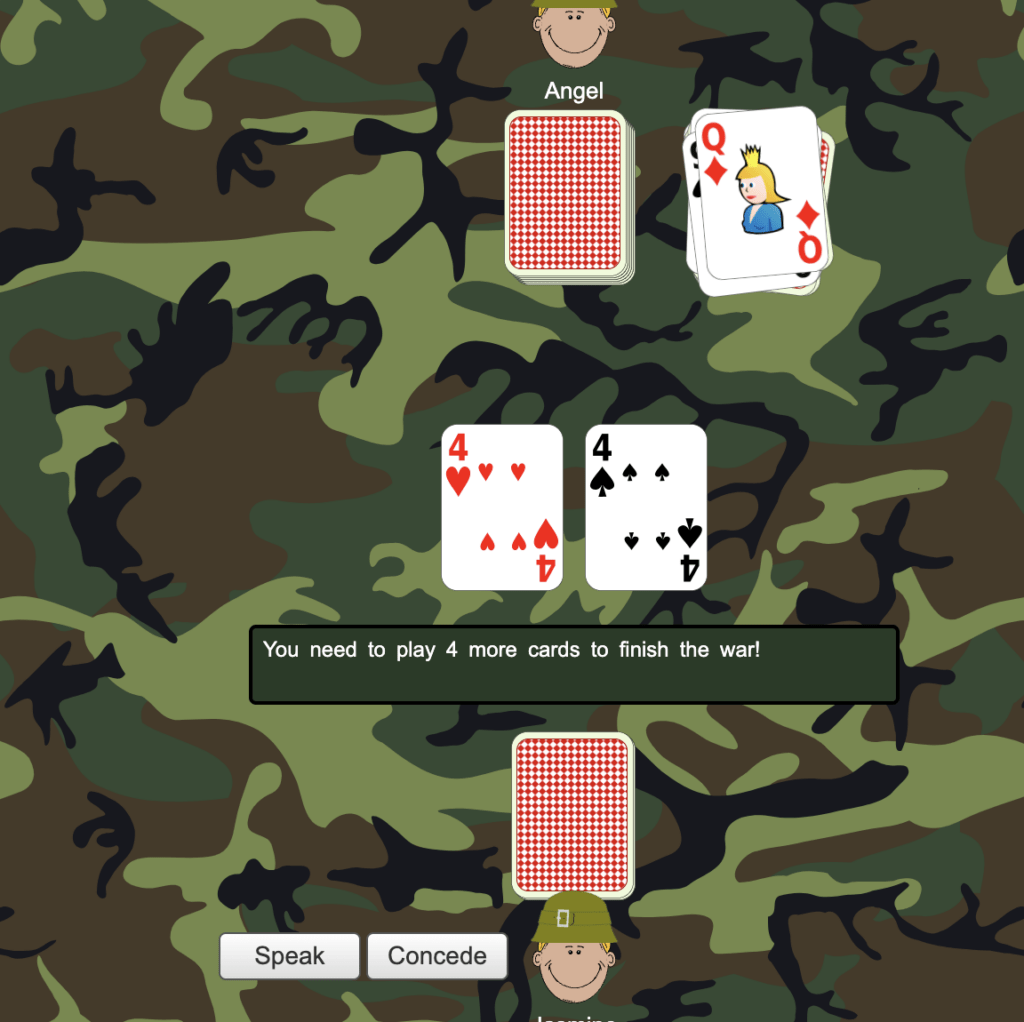This week, I decided to play war via an online simulator with one friend.

This game is intended for audiences of all ages, and is usually played with physical cards, but has been adapted to various mobile platforms. The creator of this game is unknown, likely due to the sheer amount of time it has been played.
The rules of the game are simple: each player draws a card, and whichever player pulls the card with the higher rank puts the card at the bottom of the stack. If both players pull the same rank, they go to “war” and place 3 cards face down and one face up. The card with the higher rank allows the player that put it down to collect all cards played, and the process repeats until one player has all fifty two cards in their possession.
I think this game puts players at risk for addiction for a few reasons. First, due to probability, the outcome is entirely dependent on the shuffle of the deck, and ultimately fixed based on this shuffle. Therefore, each player is compelled to keep playing until they pull the card with the higher rank, and, chances are, this card will appear in 2 to 3 tries. I also think there is an element of randomness, where a player that draws two cards of a higher rank is inclined to believe their streak of luck will continue just long enough for them to declare a win.
This game also has extremely simple rules. Even if players wanted to incorporate some sort of strategy, the opportunity to do so in a meaningful way simply is not there. Because of this, players do not have to take responsibility for any wins or losses – the game is simply there to witness by both players. There is a social component that arises here, where it is especially amusing to watch one player’s luck fail them as they continuously pull cards of a lower rank. Inversely, there is a natural jealousy and amusing disbelief that arises as one realizes they were dealt a particularly weak hand of cards. I was definitely the player with the weaker hand this time around, and I would look forward to war for the opportunity to compensate for my poor hand. This contributed to the addictive nature, because I wanted to keep playing until we drew the same card and would have to go to war. The stakes of war, which involve acquiring 8 cards instead of 1, also contributed to the addictive nature of the game. This social dynamic is only amplified during times where players must go to war, because the stakes are higher, but the player remains in the same level of control of their outcome.

While I do believe that the mechanics of the game make it addicting, this game differs from others of a similar concept because it does not usually involve any monetary game. The only way to win the game is to acquire all 52 cards, and while players are free to wager money on which player will do so, it is not an essential part of the game. Removing the monetary component of a game makes it much less addicting, because there is less of a personal imperative to win.
I did enjoy playing this game, but I do think not allowing any amount of player strategy can make it lose its charm fairly quickly. Inevitably, a game of war feels like a game of tic tac toe – a lack of difficulty and reward makes the prospect of continuously playing the game unappealing. This actively takes away from the otherwise addictive nature of the game. However, I do not think this would necessarily be the case if the game was played by a younger audience.



